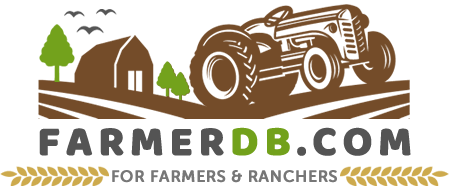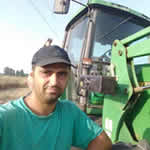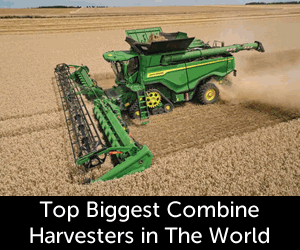The Holando Argentino is also known as the Argentine Friesian, or sometimes the Argentine Holstein-Friesian.
It is a dairy cattle breed that comes from Holstein-Friesian cattle originally brought from Europe.
The history of Holando Argentino cattle began in the late 19th century in the Netherlands. From there, it was imported to Argentina in 1880 by President Julio Argentino Roca.
The first animals were placed in the north of Córdoba, Santa Fe, and Pergamino, in the province of Buenos Aires.

Later, more cattle were imported from Holland, the United States, Germany, and other countries. These different origins helped shape the Holando Argentino breed, which officially received its name in 1925.
Today, the Holando Argentino is the main dairy breed in Argentina. It produces about 95% of the milk in the country and is the top choice for farmers aiming to make their business more profitable.
There are also continuous efforts to improve its genetics through selective breeding and the importation of semen or embryos from elite Holstein lines.
Contents
Characteristics
Color
The Holando Argentino has a distinctive black and white coat, with large, irregular patches across the body. Some animals may also be red and white.
The pattern varies from one cow to another, but the face is usually white with colored markings, and the legs and underbelly are mostly white.
Body
It has a long head with a straight profile and usually no horns, as most are dehorned when young. The ears are medium-sized and alert.
Its neck is thin and long, connecting to a wide chest. The back is straight and strong, leading to a wide and slightly sloping rump. The underbelly is large, as this breed eats a lot of grass and feed.
The udder is well-developed and firm, with four teats, and is very important for milk production. The legs are straight and strong, allowing the cow to walk long distances on pasture.
The legs are important because in Argentina, cows often move across 1.93 square miles (5 square kilometers) to find grass and other food, so strong legs help them walk long distances every day.
The tail is long and thin, with a tuft of hair at the end, and usually hangs down to the hocks.
Size
Holando Argentino cows are considered medium-sized. They usually reach a height of 4.7 to 4.11 ft. (1.4 to 1.5 m).
Lifespan
These cattle live 8 to 10 years, and in some cases up to 12 years with good care.
On most dairy farms, cows are kept for about 5 to 7 years, because their milk production goes down with age. After that, they are often replaced by younger cows.
Growth Rate
How fast do they grow?
This breed inherited its growth rate from its ancestry, having a moderate to fast growth rate.
It’s important to note that growth can vary depending on factors such as diet, management practices, and environmental conditions.
Also, although they are occasionally used for beef, most of them are bred mainly for milk production rather than muscle growth.
They grow fast enough to reach maturity efficiently, but not as quickly as beef breeds like Angus or Charolais.
Another important factor to consider when raising this breed is their environment in Argentina.
Holando Argentino cattle are often raised on native forages, with a diet made up of about 60–70% forage and 30–40% grain and by-products. Over the years, they have been selectively bred for more efficient feed conversion, allowing them to balance growth and milk production effectively.
Weight
Mature Holando Argentino cattle weigh between 1,320 and 1,430 lbs (600 to 650 kg).
Slaughter Time
Although it is mainly a dairy breed, it can also be used for beef.
The ideal slaughter weight is around 990 to 1,100 lbs (450 to 500 kg), usually reached at 18 to 24 months of age. At this weight, the animal provides a good balance of muscle and fat, with a carcass yield of about 50–55% of its live weight.
Temperament
These cattle are typically docile and well-behaved, especially in dairy settings. They are active grazers with strong herd behavior and can travel large areas to find food. Their natural instincts and efficient feed use help them thrive on grass-based diets.
Milk
Holando Argentino cows produce about 12,786 lbs (5,800 kg) of milk per lactation, with an average lactation length of 330 days. This means they give around 38.5 lbs (17.5 kg) of milk per day.
The milk contains about 3.6 to 4% fat, and each cow has an average of 3.5 lactations in her lifetime. These cows are well-suited for dairy production, especially in pasture-based systems.
Even though the milk is not as rich in fat or protein as that of some other breeds, like the Jersey, its high yield makes it excellent for industrial-scale dairy production.
Their milk is mainly used for drinking milk, cheese, and other dairy products like yogurt, butter, and dulce de leche. Its high volume and good quality make it ideal for large-scale dairy production, especially for cheeses like Mozzarella, Cremoso, and Reggianito.
Raising
Feeding
If you want to raise a Holando Argentino cow, it’s important to know that this breed needs a balanced diet to grow well and produce good milk.
In Argentina, these cows are usually raised on pasture, eating natural grasses. This is their main food. Farmers also give them hay, especially in the winter or when there isn’t enough fresh grass.
Grass and hay give them the basics, but cows that produce a lot of milk often need extra energy and protein. That’s why farmers also add grains like corn, and by-products such as silage or soybean meal. These feeds help with milk production and growth.
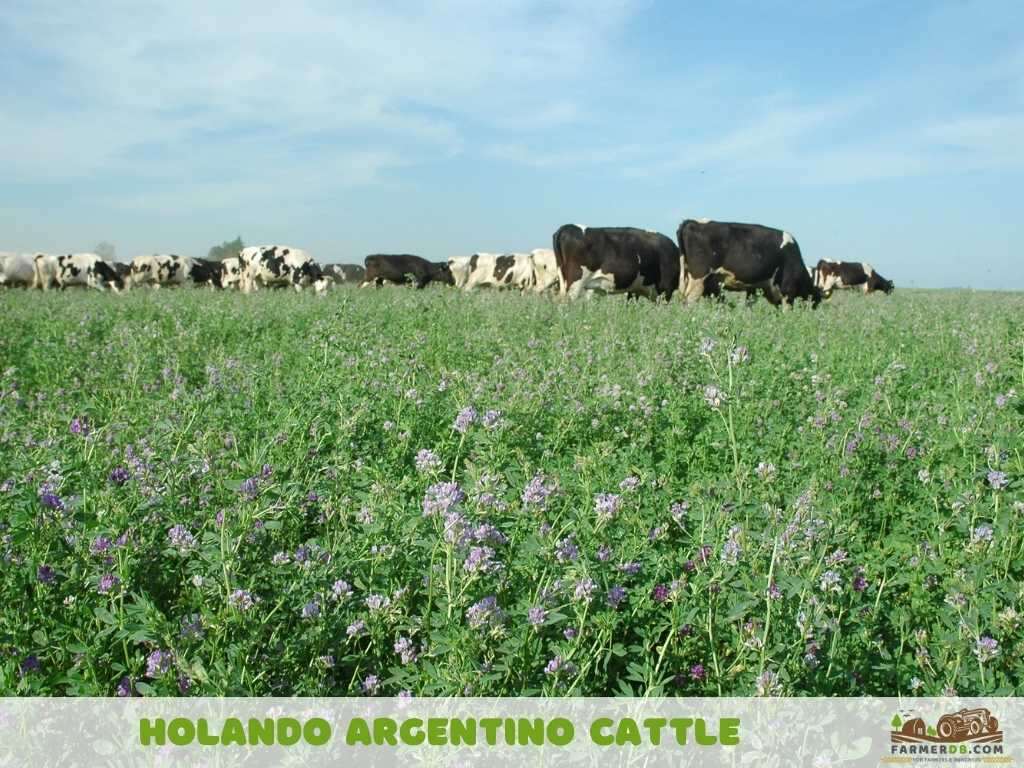
Water is also very important. These cattle drink a lot of water, especially in hot weather or when eating dry feed like hay or grains. They need clean and fresh water available at all times to stay healthy and produce milk.
Holando Argentino cattle have been selectively bred in Argentina for many years. They are now very good at using feed efficiently. This means they can convert food into milk or body weight quite well, even on pasture-based diets.
So, you can feed them grass and hay, but adding grains or supplements helps them grow better and produce more milk.
Environment
You can raise these cattle in extensive, intensive, or semi-intensive systems.
In an extensive system, cattle live outside on large pastures and eat natural grass. This is common in Argentina because the land is big and open.
Holando cattle do well in this system because they like to walk and graze. If you choose this system, you must make sure they have enough grass, hay in the winter, and clean water every day.
In an intensive system, cattle stay in smaller spaces and don’t walk much. You give them a planned diet with grains, silage, and protein feeds. This system gives more milk, but it costs more and needs more work. You’ll need to manage housing, feeding, and cleaning more carefully.
There is also a semi-intensive system, which is a mix of both. Cows go out to graze but also get extra feed. This gives good milk production without spending too much.
Climate
You can raise them in places with a mild or temperate climate, which is the type of weather found in most parts of Argentina.
This climate has warm summers, cool winters, and regular rain, which helps with good grass growth for grazing.
These cows do best in areas where the temperature is not too hot or too cold. They can also adapt to other climates, like humid or semi-dry zones, as long as they have shade, water, and proper care.
In hot climates, it’s important to protect them from the sun and heat stress by giving them shade, fresh water, and good ventilation. In cold areas, you may need to provide shelter and extra feed during winter.
How many acres per head of cattle?
A Holando Argentino cow needs about 2 to 2.5 acres of land in good pasture conditions. In poor areas with less grass or low rain, it may need 5 to 8 acres to get enough food from grazing.
Breeding
Holando Argentino cattle are usually bred using artificial insemination (AI).
This is the most common method because it helps farmers choose high-quality genetics from bulls with strong traits, like good milk production, strong legs, or good udder shape. But if you have access to a bull with good characteristics, you can also choose to breed your cows through natural mating, which is still an effective option on many farms.
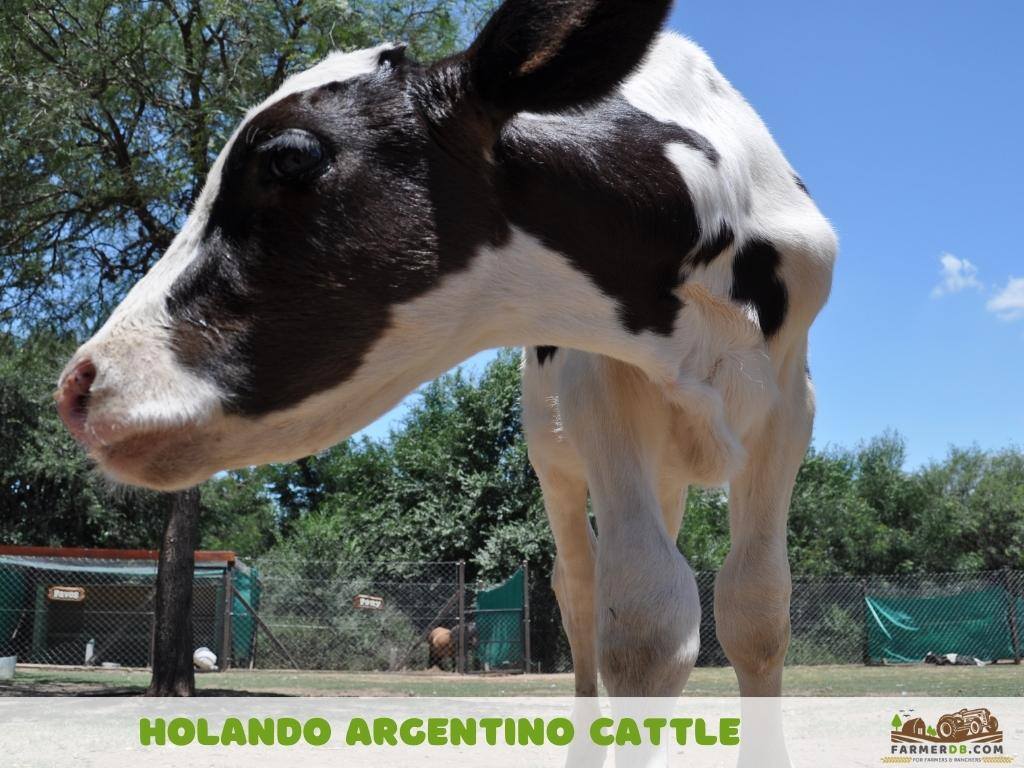
The cows normally have their first calf around 2 years old.
A pregnancy lasts about 9 months, and the cow usually gives birth to one calf. A calf weighs 88 to 99 lbs (40 to 45 kg) at birth.
They give birth without help, especially if the cow is healthy and the calf is not too big. Most births are natural and easy, but sometimes first-time mothers may need assistance.
The cows are known to be gentle and calm, which helps them take good care of their calves. Most of them have good maternal instincts.
They clean their newborns, allow them to nurse, and protect them. Their milk supply is strong, which helps the calf grow well in the early weeks. While they are not as protective as some beef breeds, they are usually reliable and caring mothers.
Terminal vs. Maternal
It is a maternal breed. The cows have good mothering instincts and usually take care of their calves well. They are calm, give plenty of milk, and can be used for several lactations.
Advantages
- Adaptability
- High milk production
- Dual purpose potential
- Good temperament
- Early maturity
- Wide distribution across Argentina
- Good mothering skills
Disadvantages
- Lower disease resistance. They are more susceptible to parasites without proper management.
- Reproductive challenges. Like many high-yielding dairy breeds, they may face fertility issues if not carefully managed.
- Heat stress sensitivity. While adaptable, they can still be affected by extreme heat, leading to lower milk yield.
